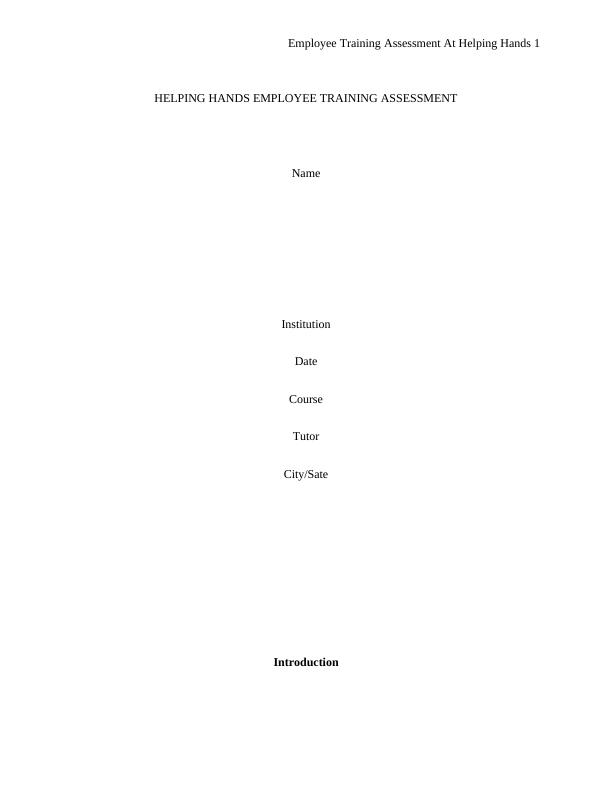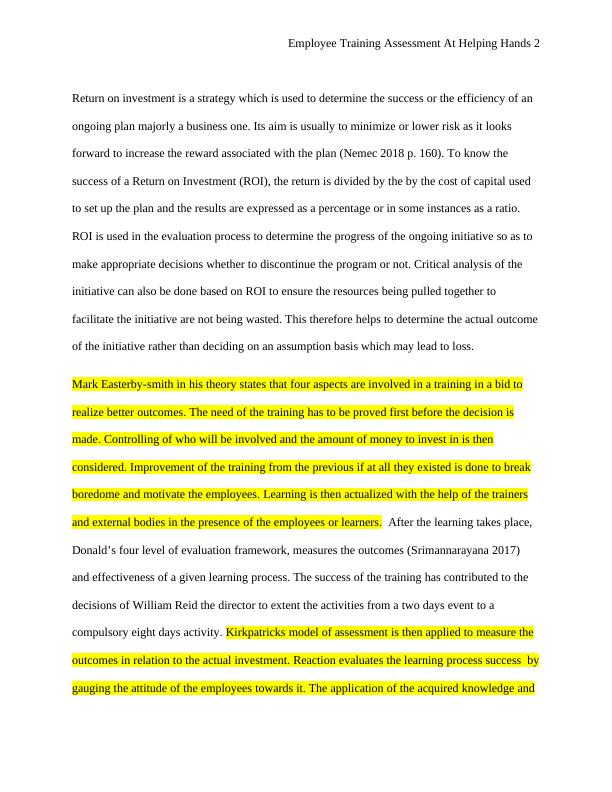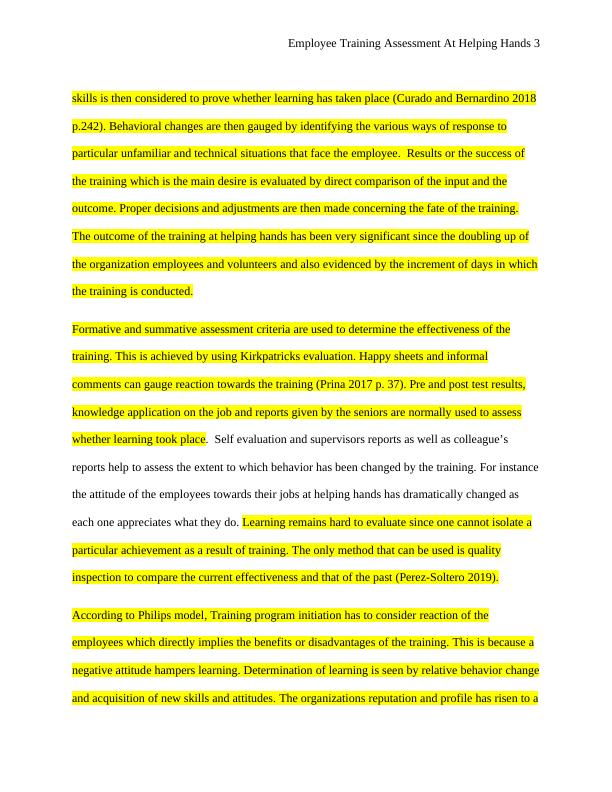Employee Training Assessment At Helping Hands
Helping Hands is a non-profit organization in Northern Ireland that provides housing, workforce integration, and support to those in need. The organization has grown significantly in recent years and has implemented a mandatory soft skills training program for employees. The case study explores the evaluation and assessment of the program's effectiveness.
Added on 2023-01-18
About This Document
Employee Training Assessment At Helping Hands
Helping Hands is a non-profit organization in Northern Ireland that provides housing, workforce integration, and support to those in need. The organization has grown significantly in recent years and has implemented a mandatory soft skills training program for employees. The case study explores the evaluation and assessment of the program's effectiveness.
Added on 2023-01-18
End of preview
Want to access all the pages? Upload your documents or become a member.



